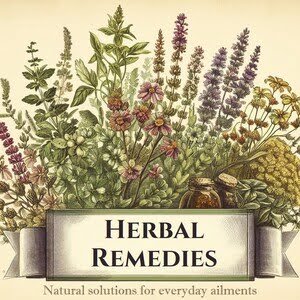Herbal remedies have been around for thousands of years and have been used by people worldwide for various purposes. These natural remedies have been used to treat many ailments, from minor ailments like headaches and colds to more severe conditions like cancer and heart disease.
Herbal remedies can be traced back to ancient civilisations like the Chinese, Egyptians, and Greeks. These civilisations used herbs to treat various ailments and believed they had healing properties. The Chinese were particularly adept at using herbs in their medicine, and their knowledge was passed down through generations of healers.
In Europe, herbal remedies were used extensively in the Middle Ages. Monks in monasteries were exceptionally skilled in using herbs to treat various ailments. They also grew herbs in their gardens and used them to create remedies.
During the Renaissance, herbal remedies became even more popular. The rise of printing allowed herbalists to share their knowledge with a broader audience, and many books on herbal medicine were published during this time. The use of herbal remedies continued to be popular throughout the centuries, and many people turned to them as an alternative to conventional medicine.
In the 19th and 20th centuries, herbal remedies declined as modern medicine became more prevalent. However, in recent years, there has been a renewed interest in herbal remedies as people seek more natural and holistic approaches to healthcare.
Today, herbal remedies treat many ailments, from minor illnesses like indigestion and headaches to more severe conditions like cancer and heart disease. Many herbs have been found to have anti-inflammatory, anti-bacterial, and anti-viral properties, making them effective treatments for various situations.
Some of the most popular herbs in herbal remedies include ginger, garlic, echinacea, chamomile, and St. John’s wort. These herbs have been found to have a wide range of health benefits, from boosting the immune system to reducing inflammation and pain.
In addition to their health benefits, herbal remedies have a long history of use in cosmetics and beauty products. Many herbs have skin-soothing properties and are used in creams, lotions, and other skincare products.
Here are some key benefits of Herbal Remedies:
Gentle and Holistic Healing:
- Unlike synthetic medications, herbal remedies work gently with the body’s natural processes. They address the root cause of ailments, promoting holistic healing rather than symptom management.
Boosting Immunity:
- Echinacea, elderberry, and astragalus are herbs that exhibit immunomodulatory effects by stimulating the activity of various immune cells, such as white blood cells. These herbs have been found to possess potent antimicrobial properties that help combat infections and strengthen the body’s defence mechanisms against various pathogens.
Reducing Inflammation:
- Turmeric, ginger, and boswellia are bioactive compounds with potent anti-inflammatory properties. These herbs exhibit significant efficacy in reducing joint pain and inflammation by inhibiting the activity of pro-inflammatory cytokines. Additionally, they have been found to alleviate digestive issues by regulating the gut microbiome and improving gut barrier function. Furthermore, these herbs benefit overall wellness by modulating oxidative stress, promoting immune function, and enhancing cognitive performance.
Calming Nervous System:
- Chamomile, valerian, and passionflower are botanicals that contain bioactive compounds with anxiolytic and sedative properties. These compounds modulate the activity of neurotransmitters in the nervous system, such as GABA, serotonin, and melatonin, which regulate mood, sleep, and stress responses. By enhancing the inhibitory tone of these neurotransmitters, these botanicals can reduce the excitability of neurons, promote relaxation, and improve sleep quality. Their effects are mediated by multiple mechanisms, such as binding to specific receptors, inhibiting enzymatic pathways, and modulating gene expression.
Digestive Harmony:
- Peppermint contains menthol, which relaxes the digestive tract muscles, aiding digestion and reducing bloating. Fennel contains an anethole, which helps stimulate digestive juice secretion and reduces indigestion and bloating. Ginger contains gingerols and gaols, which have anti-inflammatory properties and can help ease symptoms of irritable bowel syndrome, such as abdominal pain and discomfort.
Heart Health:
- Hawthorn, garlic, and olive leaf are botanicals traditionally used for their medicinal properties in promoting cardiovascular health. These botanicals contain bioactive compounds that have been shown to positively impact blood pressure regulation, circulation enhancement, and cholesterol metabolism. The mechanisms of action involve the modulation of various pathways, such as the renin-angiotensin system, endothelial function, and lipid metabolism. Hawthorn contains flavonoids and oligomeric proanthocyanidins that improve coronary blood flow, garlic has sulfur-containing compounds that enhance nitric oxide bioavailability and reduce platelet aggregation, and olive leaf contains oleuropein and hydroxytyrosol that have antioxidant and anti-inflammatory effects. These botanicals can be used alone or in combination to support cardiovascular wellness.
Skin Radiance:
- Calendula, aloe vera, and lavender promote healthy skin. They soothe irritations, heal wounds, and provide natural skincare.
In conclusion, the history of herbal remedies is fascinating. From their use in ancient civilisations to their popularity today, herbal remedies have been used to treat a wide range of ailments and have been embraced by people worldwide. As people continue to seek more natural and holistic approaches to healthcare, herbal remedies will likely continue to grow in popularity.




